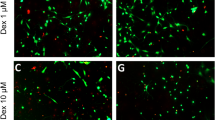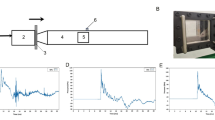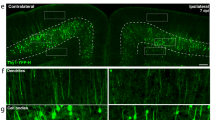Abstract
Recent evidence implicates the endogenous excitatory neurotransmitters, glutamate (Glu) and aspartate, in the pathophysiology of traumatic injury in the adult CNS, but it is not known whether similar excitotoxic mechanisms mediate traumatic injury in the immature CNS. Therefore, we developed a model of brain contusion injury in infant rats and used this model to study the nature and evolution of the acute cytopathologic changes and to evaluate the ability of Glu receptor antagonists to protect the immature brain against such changes. Seven-day-old rat pups were subjected to contusion injury and were killed 0, 0.5, 1, 2, 4, and 6 h later for histologic evaluation of the brain. Physical tearing of the dura and minor disruption of underlying brain tissue was noted at 0 h. At 30 min a discrete zone of neuronal necrosis began to appear at the border of the trauma site; this zone progressively expanded over a period of 4 h. The cytopathologic changes closely resembled the type of changes Glu is known to cause; these changes consisted of swollen dendrites, degenerating neurons with pyknotic nuclei and markedly swollen cytoplasm, and dark cells with vacuolated cytoplasm. The noncompetitiveN-methyl-D-aspartate (NMDA) antagonist, dizocilpine maleate, when administered 30 min before or 1 h after trauma, significantly attenuated the lesion. The competitive NMDA antagonist, 3-((-2)-carboxypiperazine-4-yl)-propyl-1-phosphonate, was also neuroprotective. Theα-amino-3-hydroxy-5-methyl-4-isoxazolepropionate/kainate receptor antagonist 2,3-dihydro-6-nitro-7-sulfamoyl-benzo(f)quinoxaline did not significantly suppress the lesion when given as three treatments (30 mg/kg each) 30 min before plus 15 and 75 min after the insult. These findings suggest that traumatic injury in the infant rat brain is mediated by endogenous excitotoxins (Glu and aspartate) acting at NMDA receptors and can be substantially mitigated by timely treatment with NMDA receptor antagonists.
Similar content being viewed by others
Log in or create a free account to read this content
Gain free access to this article, as well as selected content from this journal and more on nature.com
or
Abbreviations
- AMPA:
-
α-amino-3-hydroxy-5-methyl-4-isoxazolepropionate
- Asp:
-
aspartate
- EAA:
-
excitatory amino acids
- CPP:
-
3-((-2)-carboxypiperazine-4-yl)-propyl-1-phosphonate
- Glu:
-
glutamate
- MK-801:
-
dizocilpine maleate
- NBQX:
-
2,3-dihydro-6-nitro-7-sulfamoyl-benzo(f)quinoxaline
- NMDA:
-
N-methyl-D-aspartate
- NN:
-
necrotic neurons
References
Kaufman BA, Dacey RG 1994 Acute care management of closed head injury in childhood. Pediatr Ann 23: 18–28.
Faden AI, Salzman S 1992 Pharmacological strategies in CNS trauma. Trends Pharmacol Sci 13: 29–35.
Benveniste H, Drejer J, Schousboe A, Diemer NH 1984 Elevation of extracellular concentrations of glutamate and aspartate in rat hippocampus during transient cerebral ischemia monitored by intracerebral microdialysis. J Neurochem 43: 1369–1374.
Bondoli A, Barbi S, Camaioni D, Della Morte F, Magalini SI 1981 Plasma and cerebrospinal fluid free amino acid concentrations in post-traumatic cerebral oedema in patients with shock. Resuscitation 9: 119–124.
Drejer J, Benveniste H, Diemer NH, Schousboe A 1985 Cellular origin of ischemia-induced glutamate release from brain tissue anvivo and in vitro. J Neurochem 45: 145–151.
Faden AI, Demediuk P, Panter SS, Vink R 1989 The role of excitatory amino acids and NMDA receptors in traumatic brain injury. Science 244: 798–800.
Katayama Y, Becker DP, Tamura T, Hovda DA 1990 Massive increases in extracellular potassium and the indiscriminate release of glutamate following concussive brain injury. J Neurosurg 73: 889–900.
Nilsson P, Hillered L, Ponten U, Ungerstedt U 1990 Changes in cortical extracellular levels of energy-related metabolites and amino acids following concussive brain injury in rats. J Cereb Blood Flow Metab 10: 631–637.
Panter SS, Yum SW, Faden AI 1990 Alteration in extracellular amino acids after traumatic spinal cord injury. Ann Neurol 27: 96–99.
Ikonomidou C, Labruyere J, Benz A, Olney JW 1989 Antagonistic pharmacology of glutamate neurotoxicity in infant rat brain. Soc Neurosci Abstr 15: 767
Ikonomidou C, Mosinger JL, Shahid Salles K, Labruyere J, Olney JW 1989 Sensitivity of the developing rat brain to hypobaric/ischemic damage parallels sensitivity to N-methyl-aspartate neurotoxicity. J Neurosci 9: 2809–2818.
McDonald JW, Silverstein FS, Johnston MV 1987 MK-801 protects the neonatal brain from hypoxic/ischemic damage. Eur J Pharmacol 140: 359–361.
Olney JW, Ikonomidou C, Mosinger JL, Friedrich G 1989 MK-801 prevents hypobaric-ischemic neuronal degeneration in infant rat brain. J Neurosci 9: 1701–1704.
Mosinger JL, Price MT, Bai HY, Xiao H, Wozniak DF, Olney JW 1991 Blockade of both NMDA and non-NMDA receptors is required for optimal protection against ischemic neuronal degeneration in the in vivo adult mammalian retina. Exp Neurol 113: 10–17.
Sheardown MJ, Nielsen EO, Hansen AJ, Jacobsen P, Honore T 1990 2,3-Dihydroxy-6-nitro-7-sulfamoyl-benzo(f)quinoxaline: a neuroprotectant for cerebral ischemia. Science 247: 571–574.
McIntosh TK, Vink R, Soares H, Hayes R, Simon R 1990 Effect of noncompetitive blockade of N-methyl-D-aspartate receptors on the neurochemical sequelae of experimental brain injury. J Neurochem 55: 1170–1179.
Panter SS, Faden AI 1992 Pretreatment with NMDA antagonists limits release of excitatory amino acids following traumatic brain injury. Neurosci Lett 136: 165–168.
Tecoma ES, Monyer H, Goldberg MP, Choi DW 1989 Traumatic neuronal injury in vitro is attenuated by NMDA antagonists. Neuron 2: 1541–1545.
Toulmond S, Serrano A, Benavides J, Scatton B 1993 Prevention by eliprodil (SL 82.0715) of traumatic brain damage in the rat. Existence of a large (18 h) therapeutic window. Brain Res 620: 32–41.
Stewart L, Bullock R, Jones M, Kotake A, Teasdale GM 1993 The cerebral hemodynamic effects of the competitive NMDA antagonist CGS 19755 in humans with severe head injury. Abstracts of the Second International Neurotrauma Symposium, Glasgow, 76
Olney JW 1971 Glutamate-induced neuronal necrosis in the infant mouse hypothalamus: an electron microscopic study. J Neuropathol Exp Neurol 30: 75–90.
Olney JW, Collins RC, Sloviter RS 1986 Excitotoxic mechanisms of epileptic brain damage. Adv Neurol 44: 857–877.
Olney JW, Sharpe LG, Feigin RD 1972 Glutamate-induced brain damage in infant primates. J Neuropathol Exp Neurol 31: 464–488.
Ikonomidou C, Price MT, Mosinger JL, Friedrich G, Labruyere J, Shahid Salles K, Olney JW 1989 Hypobaric-ischemic conditions produce glutamate-like cytopathology in infant rat brain. J Neurosci 9: 1693–1700.
McDonald JW, Silverstein FS, Johnston MV 1988 Neurotoxicity of N-methyl-D-aspartate is markedly enhanced in developing rat nervous system. Brain Res 459: 200–203.
Henneberry RL, Novelli A, Cox JA, Lysko PG 1989 Neurotoxicity at the N-methyl-D-aspartate receptor in energy-compromised neurons. An hypothesis for cell death in aging and disease. Ann NY Acad Sci 568: 225–233.
Kato N, Yoshimura H 1993 Reduced Mg2+ block of the N-methyl-D-aspartate receptor-mediated synaptic potentials in developing visual cortex. Proc Natl Acad Sci USA 90: 7114–7118.
Monyer H, Burnashev N, Laurie DJ, Sakmann B, Seeburg PH 1994 Developmental and regional expression in the rat brain and functional properties of four NMDA receptors. Neuron 12: 529–540.
Seeburg PH 1993 The TIPS/TINS lecture: the molecular biology of mammalian glutamate receptor channels. Trends Pharmacol Sci 14: 297–303.
Marshall BE, Longnecker DE General anesthetics. In: Goodman LS, Gilman A, Rall TW, Nies AS, Taylor P (eds) The Pharmacological Basis of Therapeutics. Pergamon Press, New York, 1990, pp 285–310.
Grotta J 1994 Safety and tolerability of the glutamate antagonist CGS 19755 in acute stroke patients. Stroke 25: 255
Herrling PL 1994 D-CPPene (SDZ EAA 494): a competitive NMDA antagonist: results from animal models and first results in humans. Neuropsychopharmacology 10(No 3S/Part 1): 591S
Corso TD, Wozniak DF, Sesma MA, Olney JW 1994 Neuron necrotizing properties of phencyclidine. Soc Neurosci Abstr 20: 1531
Fix AS, Horn JW, Wightman KA, Johnson CA, Long GC, Storts RW, Farber NB, Wozniak DF, Olney JW 1993 Neuronal vacuolization and necrosis induced by the noncompetitive N-methyl-D-aspartate (NMDA) antagonist MK-801 (dizocilipine maleate): a light and electron microscopic evaluation of the rat retrosplenial cortex. Exp Neurol 123: 204–215.
Olney J W, Labruyere J, Price MT 1989 Pathological changes induced in cerebrocortical neurons by phencyclidine and related drugs. Science 244: 1360
Olney JW, Labruyere J, Wang G, Sesma MA, Wozniak DF, Price MT 1991 NMDA antagonist neurotoxicity: mechanism and protection. Science 254: 1515–1518.
Farber NB, Wozniak DF, Price MT, Labruyere J, Huss J, St. Peter H, Olney JW 1995 Age-specific neurotoxicity in the rat associated with NMDA receptor blockade: potential relevance to schizophrenia?. Biol Psychiatry 38: 788–796.
Hoffman P, Schockenhoff B, Lierz P 1991 Analgosedierung des beatmeten Intensivpatienten. Klin Wochenschr 69: suppl 25 72–79.
Langrehr D, Erdmann W 1981 Kardiozirkulatorische und respiratorische Wirkung der Kombination von Midazolam und Ketamin. Arzneimittelforschung 31: 2269–2273.
Reicher D, Bhalla P, Rubinstein H 1986 Cholinergic cerebral vasodilator effect of ketamine in rabbits. Stroke 18: 445–449.
Schulte am Esch J, Pfeifer G, Thiemig I, Entzian W 1978 The influence of intravenous anaesthetic agents on primarily increased intracranial pressure. Acta Neurochir 45: 15–25.
Schwedler M, Miletich DJ, Albrecht F 1982 Cerebral blood flow and metabolism following ketamine administration. Can Anaesth Soc J 29: 222–226.
Pfenninger E, Dick W, Grunert A, Lotz P 1984 Tierexperimentelle Untersuchungen zum intrakraniellen Druckverhalten unter Ketaminapplikation. Anaesthesist 33: 82–88.
Akeson J, Björkman S, Messeter K, Rosen I 1993 Low-dose midazolam antagonizes cerebral metabolic stimulation by ketamine in the pig. Acta Anaesthesiol Scand 37: 525–531.
Klose R, Hartung R, Kotsch R, Walz T 1982 Experimentelle Untersuchungen zur intracraniellen Drucksteigerung durch Ketamine beim hamorrhagischen Schock. Anaesthesist 31: 33–38.
Pfenninger E, Dick W, Ahnefeld W 1985 The influence of ketamine on both normal and raised intracranial pressure of artificially ventilated animals. Eur J Anaesthesiol 2: 297–307.
Thorsen T, Gran L 1980 Ketamine/diazepam infusion anaesthesia with special attention to the effect on cerebrospinal fluid pressure and arterial blood pressure. Acta Anaesthesiol Scand 24: 1–4.
Author information
Authors and Affiliations
Rights and permissions
About this article
Cite this article
Ikonomidou, C., Qin, Y., Labruyere, J. et al. Prevention of Trauma-Induced Neurodegeneration in Infant Rat Brain. Pediatr Res 39, 1020–1027 (1996). https://doi.org/10.1203/00006450-199606000-00015
Received:
Accepted:
Issue date:
DOI: https://doi.org/10.1203/00006450-199606000-00015
This article is cited by
-
Glutamate antagonists are neurotoxins for the developing brain
Neurotoxicity Research (2007)
-
Neonatal treatment with a competitive NMDA antagonist results in response-specific disruption of conditioned fear in preweanling rats
Psychopharmacology (2006)
-
Neuropathological and biochemical features of traumatic injury in the developing brain
Neurotoxicity Research (2003)



